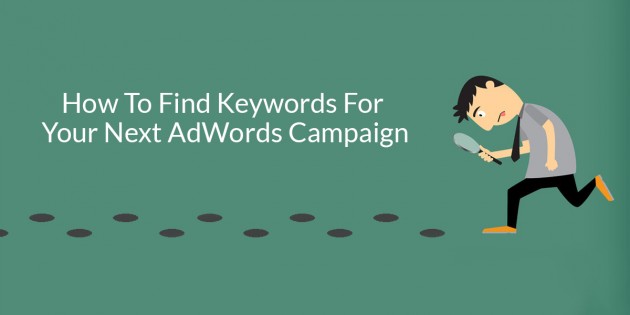When running any type of campaign on Google AdWords, you’re going to target keywords. Successful campaigns rely heavily on keyword selection, selecting poor keywords that come with a lot of competition will not only hinder your campaign, but sting your pocket as well.
In this article, I’ll show you how to use the Google Keyword Tool Planner to find the right keywords for your next AdWords campaign.
Which Keywords Should You Target?
There are three types of keywords, they are:
1) Branded keywords – are phrases or words that brand your business. For example, Nike and Just Do It are branded keywords for sporting brand Nike.
- Best for: enterprise level businesses with an already established brand.
2) Generic keywords – have a much broader reach over their respective industry. For example, real estate, homebuyer and holiday home would be considered generic keywords for the housing industry. Generic keywords usually receive 1,000 or more monthly searches.
- Best for: generating brand awareness and influencing the shopper’s decision making process.
3) Long-tail keywords – are much more defined and usually based around a sub-niche or geographical location. For example, laptop repairs in Texas, computer shops Dallas or HP Pavilion x2 10-n054sa are all long-tail keywords. Long-tail keywords usually receive 1,000 or fewer monthly searches.
- Best for: increasing conversions.
Branded keywords are suitable for enterprise level businesses who have a reputable brand, are well known and influence what prospect search on Google (searchers type in your business name when searching).
Generic keywords play their part by aiding prospects who are still in the decision making process to consider your business as a potential option. They also help raise brand awareness as they are searched thousands of times per month.
Finally, long-tail keywords is where the majority of sales take place. Prospects searching for long-tail keywords usually know what they want and are almost ready to take action.
Branded and generic keywords also help in conversions but not as well as long-tail phrases. Studies have shown that long-tail keywords account for 70% of all searches made on Google, and tend to have a 36% higher rate of conversion opposed to branded and generic keywords:
Now you know the different types of keywords to target, here’s how to use the Google Planner to find them.
Getting Started With The Keyword Tool
To make use of the Google Keyword Tool Planner you’ll have to sign-up for a Google Account (it’s free).
After logging in you’ll be directed to the dashboard where you can search for new keywords or plan your budget:
Select Search for new keywords using a phrase, website or category and the section will expand revealing further options:
Your product or service – enter keyword terms for the product or service you offer. You can select more than one product or service but must separate each one with a comma as shown in the picture above.
Your landing page – the website you wish to redirect traffic with your ad (optional)
Your product category – industry your business is in (optional)
You can also target keywords by location, language, Google and Partner sites and negative keywords.
For this example, I’ve decided to source keywords searched by people living the United States who speak English. I’ve also excluded any keywords that contain the word SEO as it’s irrelevant to my services. I could further customize the search by filtering keywords based on total number of searches (ideal if you only want to look for generic or long-tail keywords), but I want them all!
I’m a greedy person 😀 .
Once you’ve tweaked your filters, hit Get Ideas.
Understanding The Data
Within seconds you’re presented with hundreds of keywords relating to your business. The Planner lists keywords in Ad group ideas and Keyword ideas:
Ad Group ideas
Keyword ideas
From the filters set, AdWords has returned 134 potential keywords I could use for my next PPC campaign. The planner reveals their average monthly searches, level of competition from competitors and the average cost per click for each keyword.
To adjust the search to show the cheapest keywords or phrases that receive the most searches, click on any column to adjust the order. You can adjust your targeting filters to receive a sharper or broader list of keywords by editing the parameters using the sidebars:
Once you’re happy with your findings, you can save all keywords by clicking the download button or select specific keywords by clicking the >> arrow in the Add to plan column.
Keywords will be saved to an excel file where you can take a closer look and pick appropriate keywords for your next campaign.
Summary Of The Keyword Tool
Sourcing the right keywords will dramatically increase your Quality Score and lower your spend.
Knowing the reach of keywords and their costs can also help better plan campaigns based on your objectives. For example, using generic keywords that receives thousands of searches will have a better impact on raising brand or product awareness, while long-tail phrases will push prospects over the line to become customers.
The Google Keyword Tool Planner is a great resource to use, play around with it and see what you can find.
Nick Bridges
Latest posts by Nick Bridges (see all)
- Facebook Releases 8 New Standard Events - November 14, 2018
- Facebook Pixel Changes 2018 - October 11, 2018
- Writing Compelling Ad Headlines that People Will Click - September 12, 2016









